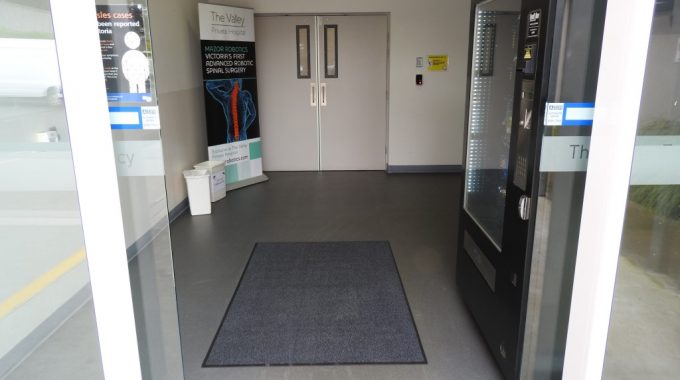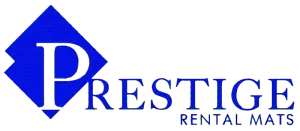
Dust is a common and often overlooked workplace hazard. It can cause significant problems for your staff, customers, patrons and anybody else who attends your work site.
Some of the issues dust can cause includes respiratory problems, eye irritation, and skin irritation, among other health issues. Dust is also a fire hazard, as it can ignite and cause explosions.
Controlling dust in the workplace is essential to maintaining a safe and healthy work environment. Below, we will discuss what exactly causes dust at work, and discuss 11 tips to prevent and stop it from becoming a problem.
What causes dust in the workplace?
Dust in the workplace can come from a variety of sources, depending on the nature of the work being performed. For example, in manufacturing settings, dust can be generated by various processes such as mixing, pouring, and packing materials like powders, chemicals, and food products.
Dust is also no stranger to retail. Depending on the type of products sold, dust can be generated from items such as clothing, books, or food. For example, textiles can generate lint and fibres that become airborne and settle as dust. The movement of customers and employees can stir up dust particles that have settled on surfaces such as floors, carpets, and shelves.
Even in office settings, dust can come from everyday activities such as printing, copying, and shredding paper.
11 tips to prevent and stop dust in the workplace
Below are 11 tips for preventing and controlling dust in the workplace. These tips will help you reduce the risk of health problems and fire hazards, maintain good air quality, and create a safer and healthier work environment.
1.Dust protection mats
One of the simplest and most effective ways to prevent dust in the workplace is to use dust protection mats. These mats are designed to trap dust and dirt from shoes and equipment, preventing them from being spread around the workplace. Dust protection mats are especially useful in high traffic areas, such as entrances and exits, and can significantly reduce dust in the air.
2. Regular cleaning
Simply put, regular cleaning is essential to prevent and control dust in the workplace. This includes cleaning floors, surfaces, and equipment on a regular basis using equipment such as microfiber cloth.
It is also important to clean air ducts and ventilation systems to prevent the buildup of dust and other contaminants.
3. Personal protective equipment
Personal protective equipment, or PPE, is essential for workers who are exposed to dust in the workplace. This may include respirators, goggles, gloves, and other protective gear.
It is important to provide workers with the appropriate PPE and ensure that it is worn correctly and consistently.
4. Air conditioning and ventilation
Proper ventilation is essential to control dust in the workplace. This includes both natural ventilation, such as opening windows and doors, and mechanical ventilation, such as air conditioning, ceiling fans, HVAC systems, and air purifier or filtration systems.
Good ventilation can help to remove dust and other airborne contaminants from the workplace, ensuring a safe and healthy work environment.
5. Wet cleaning
Wet cleaning is another effective way to prevent and control dust in the workplace. This involves using water and cleaning agents to trap dust and dirt, rather than simply stirring it up into the air.
Wet cleaning can be especially effective in areas where dry sweeping or vacuuming is not feasible.
6. Vacuuming
Vacuuming is an essential part of any dust control program. It is important to use a high-quality vacuum with a HEPA filter to ensure that dust and other airborne contaminants are effectively removed from the workplace.
Vacuuming should be done regularly, especially in high traffic areas and areas where dust is generated.
7. Dust suppression systems
Dust suppression systems, like high-quality fogging or misting systems, can be an effective way to control dust in the workplace. These systems use water or other materials to suppress dust, preventing it from becoming airborne in the first place. They can be especially useful in areas where dust is generated, such as busy factories.
8. Enclosures and barriers
Using enclosures and barriers can be an effective way to prevent dust from spreading throughout the workplace. For example, if a specific area of the workplace generates a lot of dust, an enclosure can be built around the equipment or process to contain the dust. This can be done using materials such as plastic sheeting, curtains or walls.
9. Source control
Source control involves taking steps within your own operations to prevent dust from being generated in the first place.
Using materials that generate less dust is an effective technique. Using a wet saw instead of a dry saw to cut materials, for example, may help with dust prevention.
10. Employee training
Everybody has the responsibility to contribute to a safe workplace, but it all starts with knowledge. Employee training is essential to ensure that workers understand the risks associated with dust exposure and know how to prevent and control it. This may include training on the proper use of PPE, safe work practices, and proper cleaning techniques.
11. Regular audits and inspections
Regular inspections are essential to identify potential dust hazards in the workplace. Inspections should be done on a regular basis and should focus on areas where dust is generated or may accumulate. By identifying potential hazards early, you can take steps to prevent them from becoming a more significant problem later down the track.
Looking for a cost-effective and easy dust control solution?
Controlling dust in the workplace is essential to maintaining a safe and healthy work environment. By using the tips outlined in this article, you can prevent and control dust in your workplace, reducing the risk of health problems and fire hazards.
At Prestige Rental Mats, we supply high-quality dust control and protection mats for businesses across Melbourne. They are specifically designed to to capture and minimise the dust floating in the air across your workplace, so you can feel confident that your staff, customers and visitors are safe. The mats are laundered regularly to help maintain a dust free enviroment.
